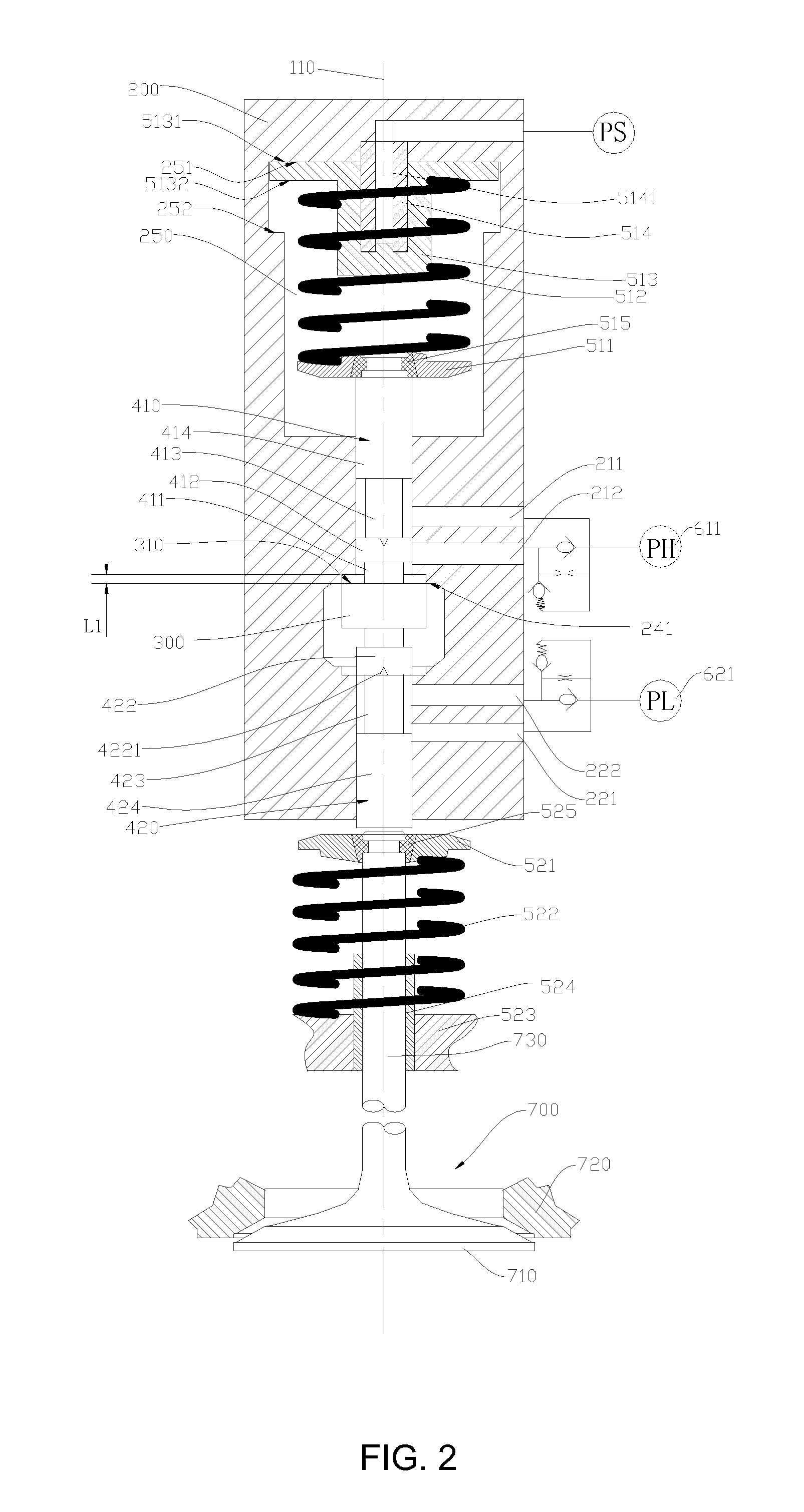Variable valve actuator
- Summary
- Abstract
- Description
- Claims
- Application Information
AI Technical Summary
Benefits of technology
Problems solved by technology
Method used
Image
Examples
Embodiment Construction
[0031]Please refer to FIG. 1 and FIG. 3, a preferred embodiment of the present invention, an actuator, comprises a housing 200; in the housing 200, in the second direction (from the top to bottom in the figures) along a longitudinal axis 110, a start port 260, a cavity 250, a first control passage 271, a first upper port 211, a second upper port 212, an actuation cylinder 230, a fluid bypass 240, a second lower port 222, a first lower port 221, and a second control passage 272; in the cavity 250, a first spring system (not labeled in FIGS. 1 and 3), a first piston rod 410 in the first control passage 271, an actuation piston 300 in the actuation cylinder 230 and the fluid bypass 240, a second piston rod 420 in the second control passage 272, and a second spring system (not labeled in FIGS. 1 and 3); an engine valve 700; a start hydraulic fluid source 800 connected to the start port 260, first hydraulic fluid source 611 connected to the upper port, and a second hydraulic fluid source...
PUM
 Login to View More
Login to View More Abstract
Description
Claims
Application Information
 Login to View More
Login to View More - R&D
- Intellectual Property
- Life Sciences
- Materials
- Tech Scout
- Unparalleled Data Quality
- Higher Quality Content
- 60% Fewer Hallucinations
Browse by: Latest US Patents, China's latest patents, Technical Efficacy Thesaurus, Application Domain, Technology Topic, Popular Technical Reports.
© 2025 PatSnap. All rights reserved.Legal|Privacy policy|Modern Slavery Act Transparency Statement|Sitemap|About US| Contact US: help@patsnap.com



